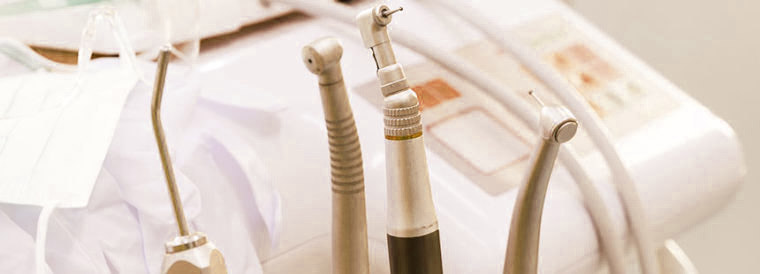What Is Dental Cross-Contamination?
Cross-Contamination: The process by which bacteria or other microorganisms are unintentionally transferred from one substance or object to another, with harmful effect.

How Can Cross-Contamination Occur?
Cross-contamination occurs when cleaning or sterilization has not been performed or has been ineffective. Most offices have a dedicated “infection control” staff member whose sole responsibility is to clean instruments and the office. Let’s consider one example, the autoclavable air water syringe tip. Scientific studies have proven that current sterilization protocols are ineffective for autoclavable tips. If this tip is not cleaned properly, it poses a serious risk of cross-contamination. What occurs is that blood, saliva, and tissue from one patient are drawn back into the tip. The tip is then placed into the ultrasonic fluid, which is not cleaned as frequently as it should be, introducing even more bacteria.
Subsequently, the tip goes into the autoclave, which bakes the bacteria into it. This contaminated tip is then used on another patient. The potential for blood, saliva, and tissue from one patient to be introduced into another patient’s mouth constitutes cross-contamination. There are numerous other instances of everyday cross-contamination potential, such as inadequate utensil cleaning, neglecting to clean the dental chair, and dental staff not wearing appropriate safety gear (gloves, masks, etc.). Cross-contamination poses a significant danger and is the easiest way for patients or dental staff to become ill.
Why Cross-Contamination Is Dangerous?
Cross-contamination is dangerous because people can get sick. There have been many instances, not only in dentistry, where there have been patient-to-patient or dentist-to-patient contractions of Hepatitis C, HIV, and much more. Most people don’t think they can get sick when they go to a dental office, but that’s not true. Knowing what cross-contamination is will help you understand how to keep yourself safe when being treated at a dental office. For more news stories, please visit the News page on this site to see how common cross-contamination occurs.
Cross-Contamination Prevention
To prevent cross-contamination, you should always maintain awareness of the devices and products used for each patient. Dentists, orthodontists, and hygienists excel in maintaining cleanliness in their offices, but the real risk stems from the products they employ. Unfortunately, some dental products and devices have not received updates for years. As we know, bacteria and micro-organisms consistently mutate and develop resistance to current sterilization procedures. Dental staff should acknowledge this and guarantee that, when available, they use disposable or heat-sterilizable products. Disposable products are designed to eradicate cross-contamination. They are used on one patient and then discarded, eliminating the use of products on multiple patients and thus reducing the likelihood of cross-contamination. If a dental device is not for single use, it must withstand heat for sterilization between patients.
When you visit a dental office, also confirm that the staff wears protective gear, such as gloves, masks, and eye protection. This practice ensures your safety as well as that of the dental staff.
On your next visit to a dental office, ask the staff what they do to prevent cross-contamination.

